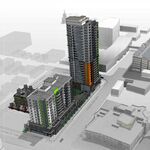ShonTron
Moderator
Member Bio
- Joined
- Apr 24, 2007
- Messages
- 12,482
- Reaction score
- 9,301
- Location
- Ward 13 - Toronto Centre
Toronto Hydro simply doesn't care. I'm seeing more of the classic acorn lights downtown replaced with generic HPS cobraheads stuck to the traditional brackets. On Eglinton East, along the Crosstown route, brand new cobraheads went up on brand new poles.
While everywhere else is switching to LEDs, Toronto Hydro is singlehandedly keeping the old cobrahead production line going.
While everywhere else is switching to LEDs, Toronto Hydro is singlehandedly keeping the old cobrahead production line going.




